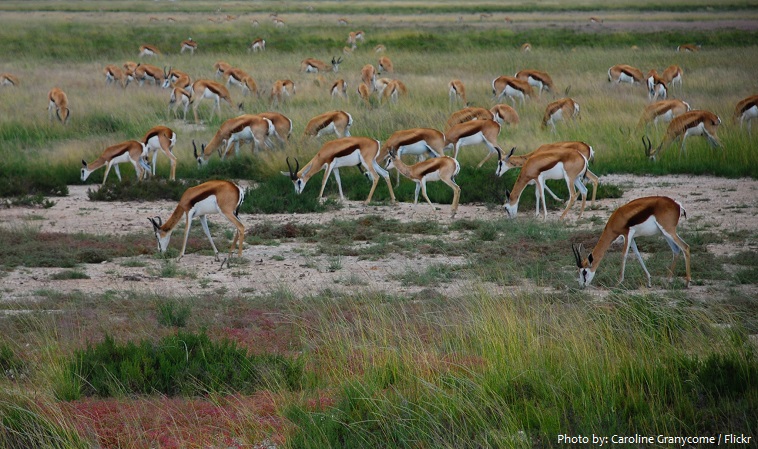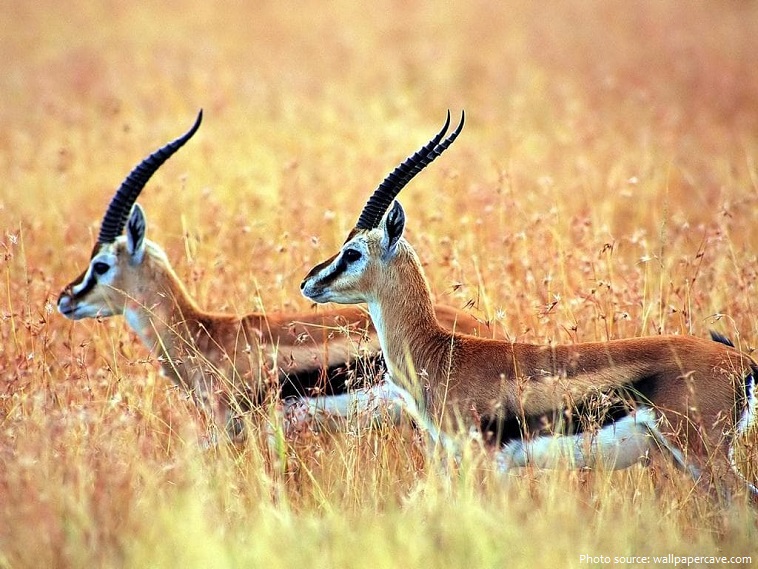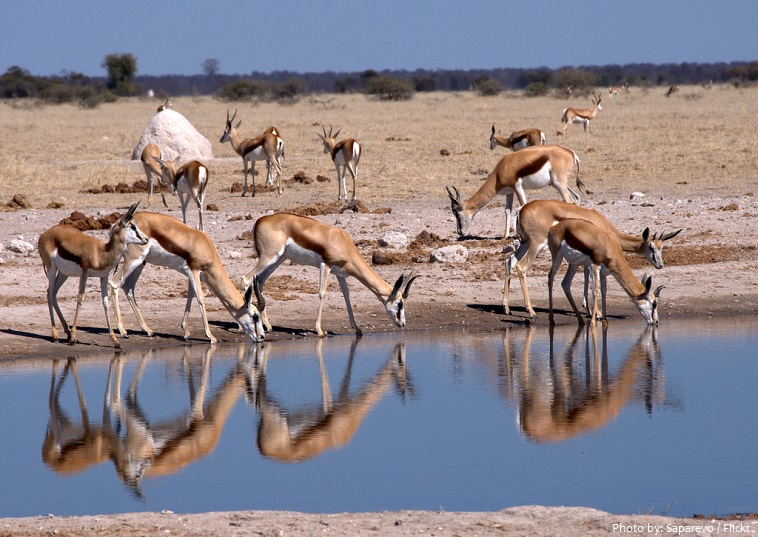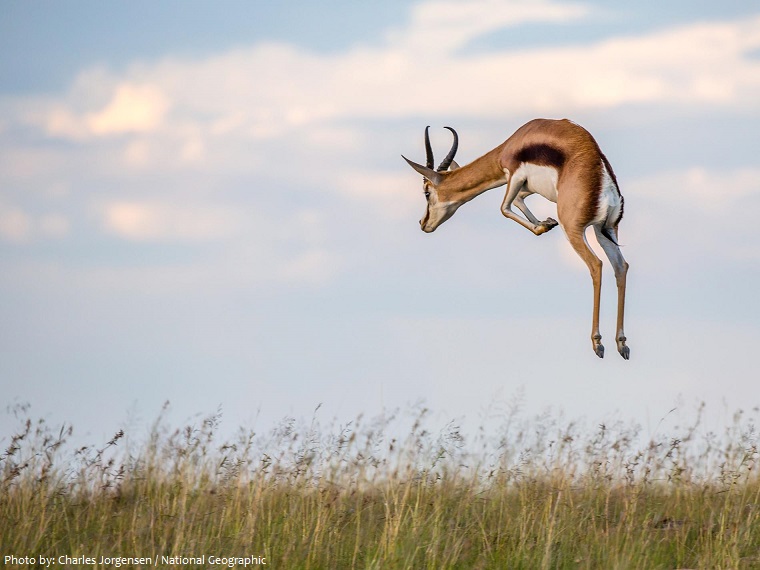The springbok is a species of antelope.
The scientific name of the springbok is Antidorcas marsupialis.
The sole member of the genus Antidorcas, this bovid was first described by the German zoologist Eberhard August Wilhelm von Zimmermann in 1780.
The common name “springbok” comes from the Afrikaans words spring (“jump”) and bok (“antelope” or “goat”); the first recorded use of the name dates to 1775.
Springbok range includes south and southwestern Africa, mainly in the countries of Namibia, Botswana, Angola and the Republic of South Africa.
Springbok are mostly confined to game reserves and farms in treeless savanna associated with the edges of dry lake beds.
A graceful, slender, long-legged antelope, the springbok reaches 71 to 86 cm (28 to 34 in) at the shoulder and weighs between 27 and 42 kg (60 and 93 lb).
Both sexes have a pair of black, 35 to 50 cm (14 to 20 in) long horns that curve backwards.
The coat is pale to rich cinnamon brown with extensive areas of white including the head, ears, underparts, backs of legs, rump, and tail. A heavy black to brown to light brown side stripe, narrow cheek stripe, and tail tip contrast with the white markings.
Springbok are diurnal and are most active in the early morning, the late afternoon and the early, dark evening hours.
A mixed feeder comparable to Thomson’s gazelle, the springbok grazes during the rainy season and browses on foliage, forbs, and tsama melons during the dry season. It drinks when water is available but can subsist indefinitely on browse with a water content of at least 10 percent.
The social structure of the springbok is similar to that of Thomson’s gazelle. They usually form groups with a fluid association of 5 to 60 individuals, although temporary associations can number in the hundreds.
Springbok are generally quiet animals, though they may make occasional low-pitched bellows as a greeting and high-pitched snorts when alarmed.
When frightened or excited, a springbok makes a series of stiff-legged vertical leaps up to 3.5 meters (11.5 feet) high. This behavior is known as pronking and is performed with the head down, the hooves bunched, and the back arched. The leaps are said to distract predators.
Springboks have been clocked at 88 kilometers (55 miles) per hour, as fast as any gazelle, but they can be outrun by cheetahs over a short distance and by wild dogs over a long distance.
The springbok generally mates during the dry season and lactates during the hot, wet season when resources are most abundant. Gestation lasts five to six months, after which a single calf (or rarely twins) is born. Mother and calf rejoin the herd about three to four weeks after parturition; the young are weaned at five or six months.
Caracals, cheetahs, lions, leopards, hyenas, and wild dogs are major predators of the springbok. Southern African wildcats, jackals, black eagles, martial eagles, and tawny eagles target juveniles.
The IUCN Red List of Threatened Species lists classifies the springbok as a least concern species. No major threats to the long-term survival of the species are known; the springbok, in fact, is one of the few antelope species considered to have an expanding population.
They are popular game animals, and are valued for their meat and skin.
The springbok is the national animal of South Africa.
It is also the symbol and nickname of the national rugby team of South Africa.





